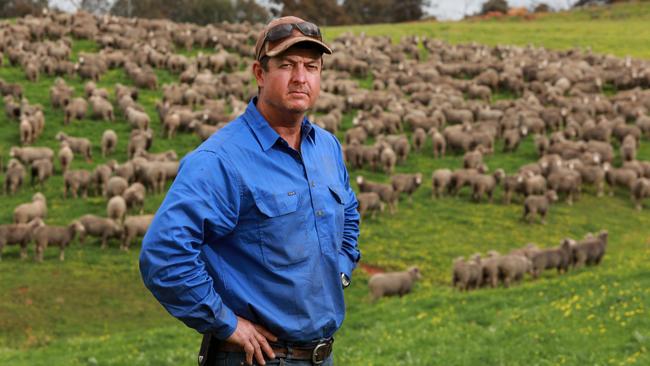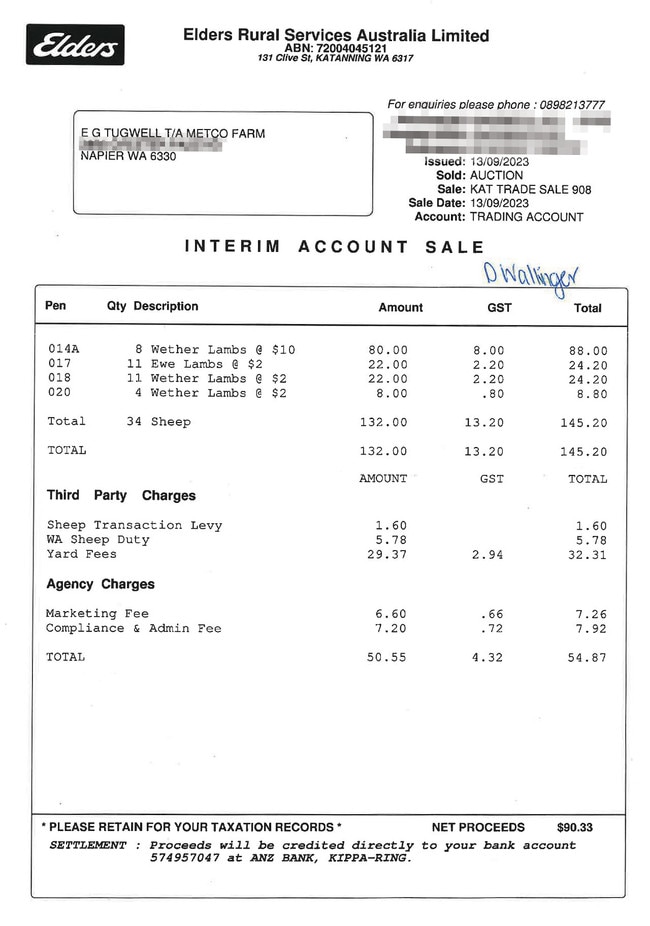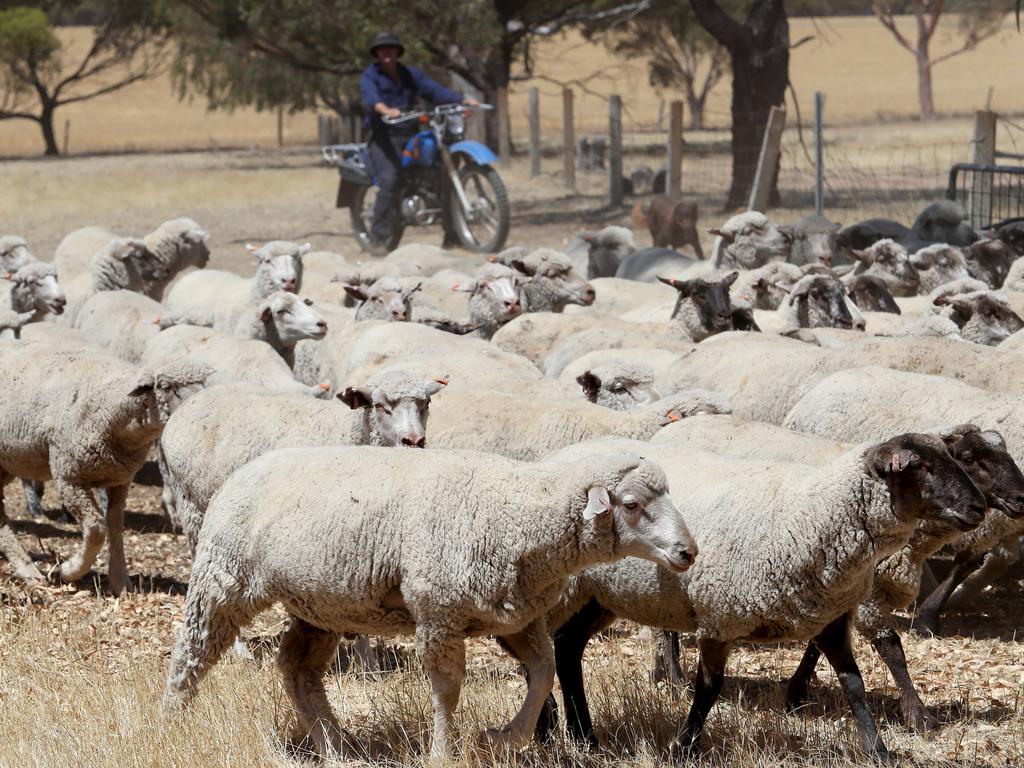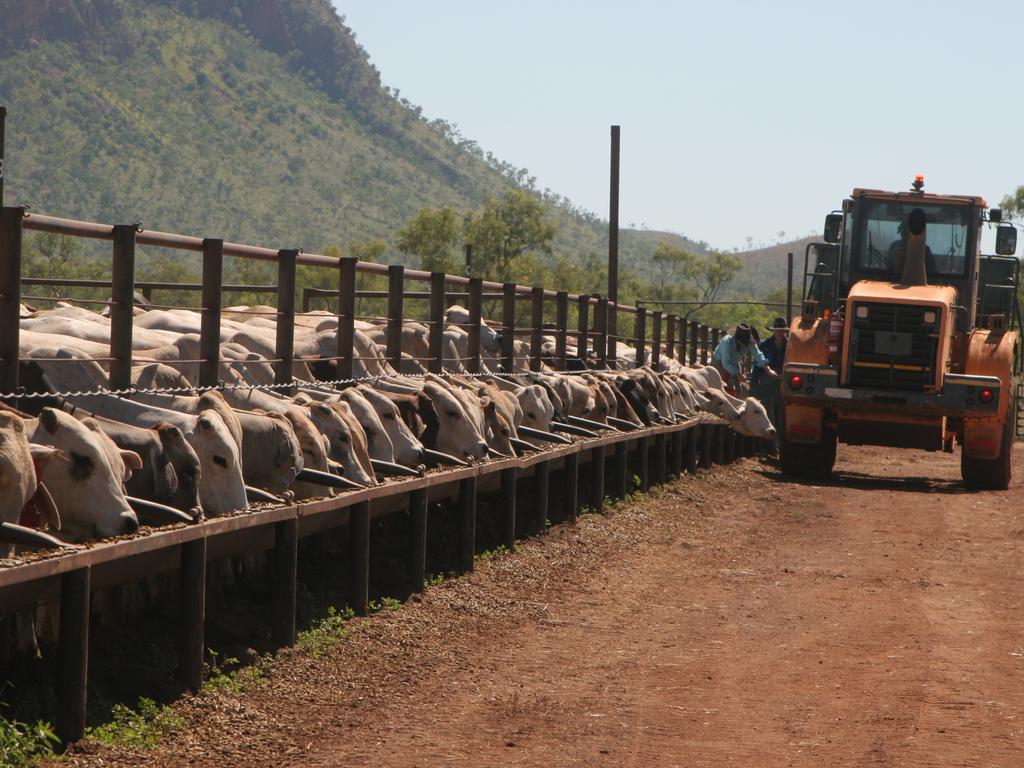Lambs sell for $2 a head as export ban looms
Sheep farmers are receiving as little as $2 an animal amid a complete collapse in prices that some have blamed on the looming ban on live sheep exports.

Sheep farmers are receiving as little as $2 an animal amid a complete collapse in prices that some have blamed on the looming ban on live sheep exports.
Prices across the country have fallen to a point where it makes more economic sense to shoot sheep rather than sell them.
Albany farmer Mick Tugwell, who this week received just over $90 for the sale of 34 lambs from his farm, 26 of which sold at a base price of $2 each, told The Weekend Australian that he was now weighing up whether he should just simply give away his remaining 250 sheep.
“Twelve months ago we would’ve been getting between $150 to $170 for lambs identical to those,” he said.
Mr Tugwell, who receives an army pension after spending more than 30 years in the armed forces, said his immediate thought after the sale had been for other farmers who do not have another source of income.
“We were in a bit of shock (over the price), but my biggest concern is for the poor bastards who have no other form of income and rely solely on lamb and sheep production to survive,” he said.
Just outside the southwest WA town of Boddington, sheep farmer Simon Kelsall is bracing himself for a dismal upcoming sales season when he starts to move the 9500 sheep he is preparing for sale.
Rather than accept token prices for some of his lower-quality lambs, he recently gave away 15 or so to some locals as dog food.
He expects his higher quality sheep will fetch closer to $50 to $60 each when they go to market in coming weeks and months, well above the $2 price Mr Tugwell received but well down on the $240 a head they were selling for two years ago.
“We’ve had a very good season so we will be able to fatten our sheep, but other areas that haven’t had such a kind season will be selling undesirable sheep and will have to take the $2 price. It’s not going to be pretty,” he said.
Prices have collapsed amid federal government moves to end live sheep exports, although farmers say cyclic factors and an oversupply of lamb meat in key overseas markets have had an impact.
Liberal MP Rick Wilson, who owns a farm not far from that of Mr Tugwell, said the impending export ban had triggered a rush by farmers to get rid of their remaining sheep.
He said one local abattoir had told him it had received numerous heavily pregnant ewes for slaughter during the winter months.

“It’s not ideal from an animal welfare perspective, it’s not ideal for the people processing them, but farmers have just gone ‘I don’t want to deal with another year’s lamb drop. I just want to get rid of them now,’ ” he said.
Data released by Meat & Livestock Australia on Friday showed that almost 464,000 lambs were slaughtered in the past week, the highest weekly September lamb slaughter on record.
Leading WA livestock processor V & V Walsh this week announced it would move from a five-day working week to a six-day week to help get through the backlog of lambs.
Chief executive Brent Dancer said the number of lambs processed each week would increase 30 per cent to 21,000 as a result.
Mr Dancer said overseas cold stores were full of high-priced lamb that they were struggling to shift.
Many farmers had held on to their lambs in the hope of a rebound that hadn’t happened.
“We think this is a relatively short-term supply-demand imbalance, and will soon correct, however, there was a need from our lamb suppliers to shift large numbers of old season’s lambs now, and so we have responded,” he said.
Mr Wilson has seen similarly dire conditions once before, in the early 1990s when the then Labor government introduced the national flock reduction scheme.
Back then, he was a 21-year-old farmer who had to go out and shoot thousands of sheep.
It was a haunting experience, and he fears what the current crisis will mean for the mental health of farmers across Australia.
“There is nothing more soul-destroying and gutting for a young farmer than to be shooting your beautiful livestock, looking at you with those big trusting eyes as you pull the trigger. It’s not something that I would ever want to see anyone go through,” he said.
While the Albanese government has committed to eventually end the live export of sheep, it has said the end date for live sheep exports by sea will not occur during this term of parliament.
Asked about the $2 an animal sale price, a federal government spokesman said “commercial decisions (were) a matter for businesses”.
“We will await the report from the independent panel before making any decisions about how best to deliver a considered and orderly transition,” he said.
“The government will continue to work with industry to develop growth opportunities, including an expansion of onshore processing, which has seen sheep meat exports increase in real terms by around 200 per cent since 2003.”
WA Agriculture and Food Minister Jackie Jarvis said the decline in sheep prices started well before the Albanese’s announcement to end exports.
She also said the government would continue to fight for “the best possible outcome” for the sheep industry.
“I understand this is a trying time for West Australian sheep producers and that is why our government is working to promote the diversification of products and overseas market access,” she said.
While many others are ditching their sheep and switching to farming crops, Mr Kelsall has decided to stick with sheep for the long term.
“I’m a pretty positive guy and I try to stick to what I do,” he said.
“I’m going to take the punt and keep going with the sheep in the hope that things actually pick up next year.”








To join the conversation, please log in. Don't have an account? Register
Join the conversation, you are commenting as Logout